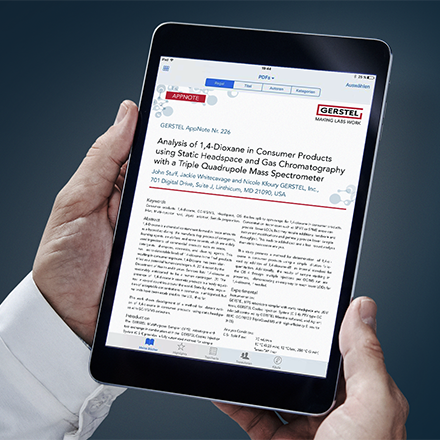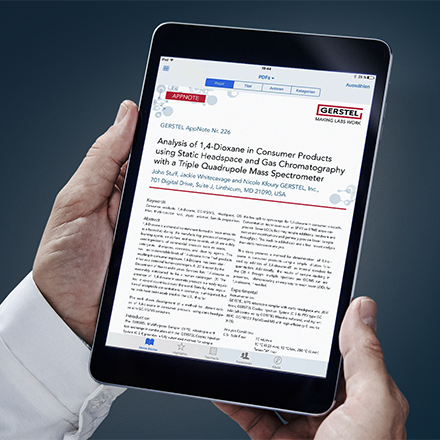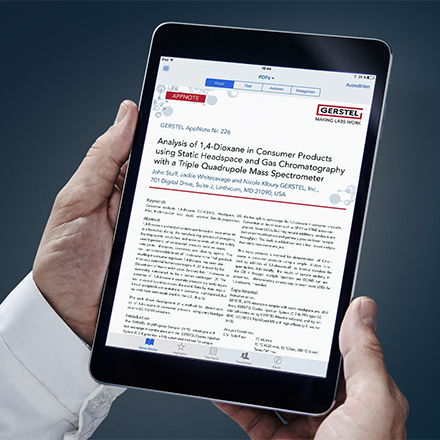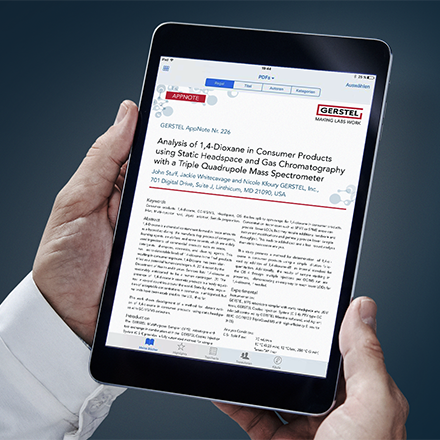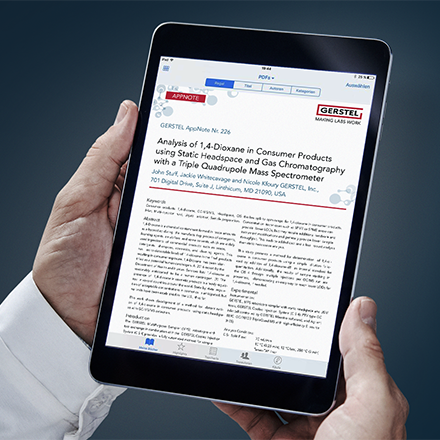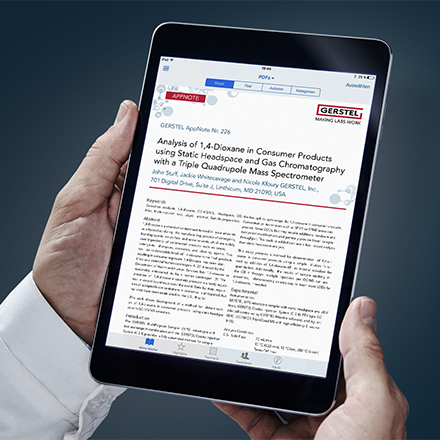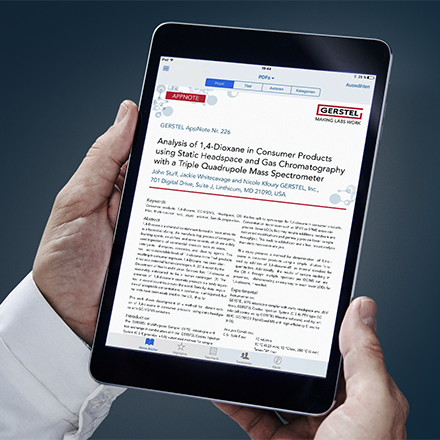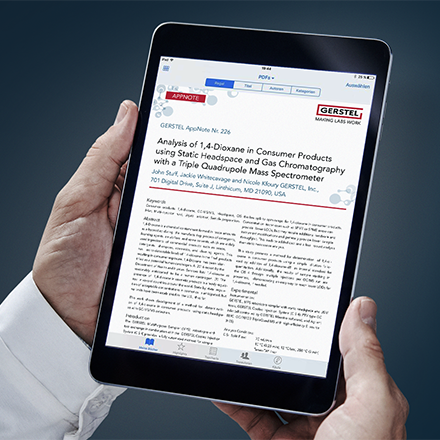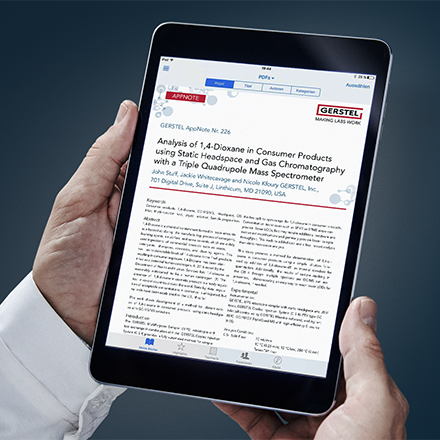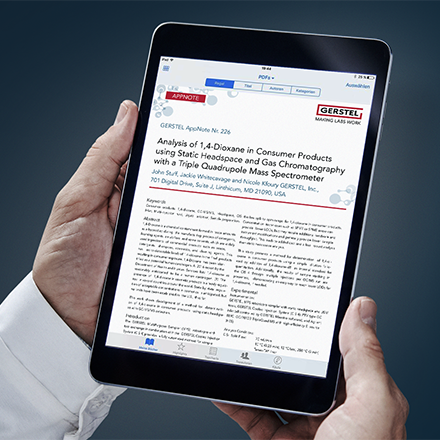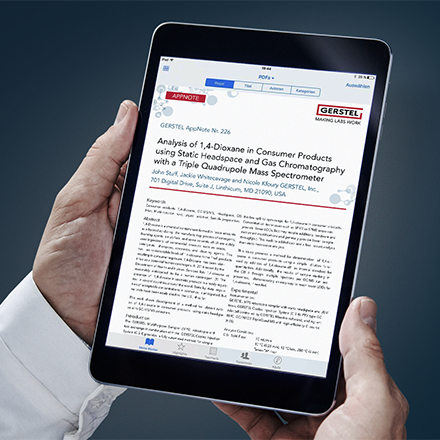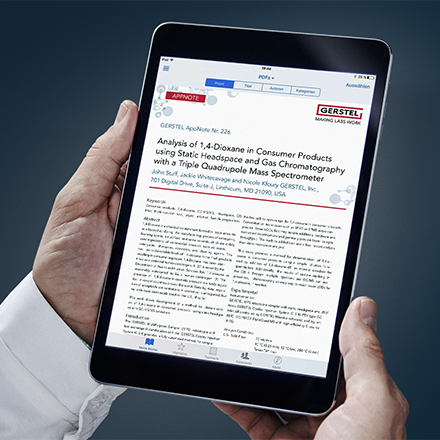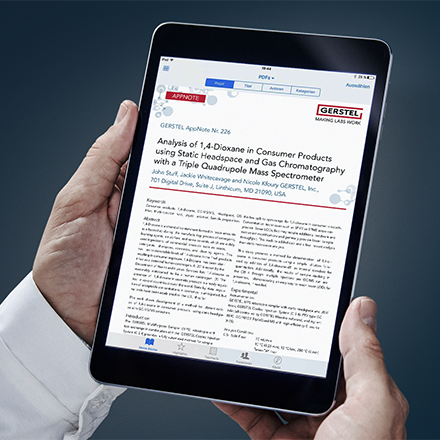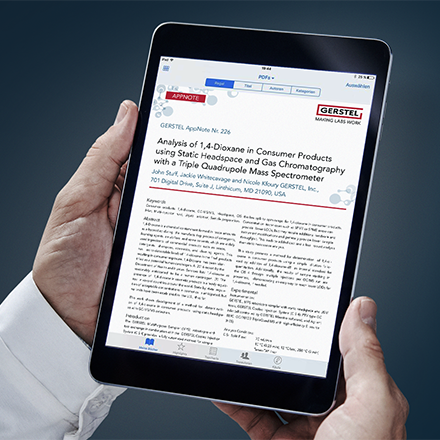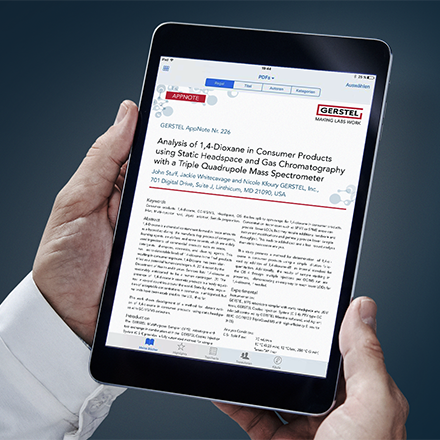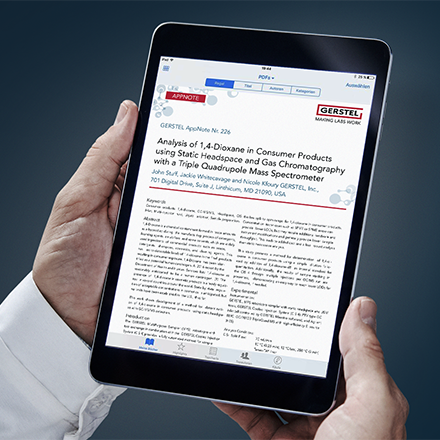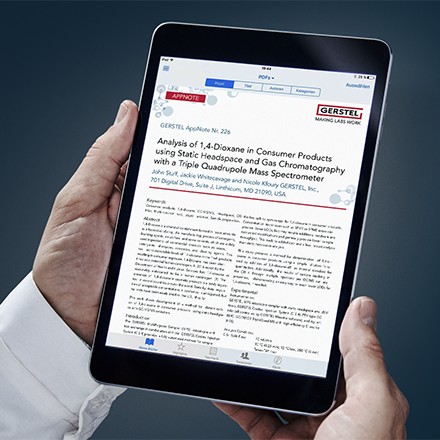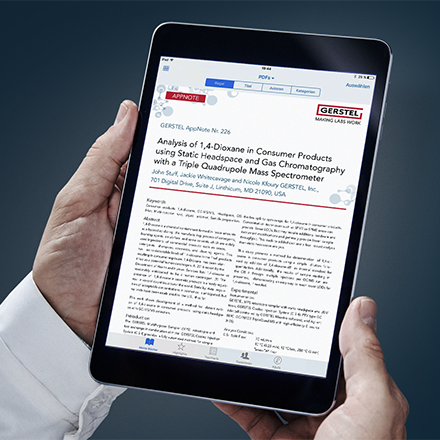Food and beverages contain a complex mixture of compounds that make up the characteristic smell and taste of each individual product. Whereas most beverages “only” consist of a water matrix with high proportions of alcohol, sugar and/or plant components, foodstuffs can contain an almost infinite variety of compounds and matrix consistencies. Critical taste and aroma components are often only present in low concentrations. Analyzing such substances requires different approaches and analytical techniques.
Some of these techniques are based on the distribution of volatile aromas in the gas phase. With the aid of the GERSTEL Multi Purpose Sampler (MPS) and techniques such as static headspace or solid phase micro-extraction (SPME) specific components from the gas phase can be analyzed and matrix interference remedied. These techniques have the aim of creating profiles of highly volatile compounds.
Other aroma compounds are either non-volatile or semi-volatile and therefore cannot be detected in the gas phase in some cases. Such important information can be lost, in particular with samples of unknown composition. This is where GERSTEL technology such as the Stir Bar Sorptive Extraction (SBSE) or the Dynamic Headspace (DHS) come to the fore.
Aroma components can be reliably detected with the GERSTEL Olfactory Detection Port (ODP) and reliably identified with the GERSTEL Olfactory Data Interpreter ODI software and the AromaOffice software.
The smell of a product is a very important factor for the consumer in terms of overall perception and acceptance. An exact qualitative and quantitative analysis of perfumed products is therefore indispensable for the scent and perfume industry.
GERSTEL has solutions for conventional and proven analysis methods such as static headspace or solid phase micro extraction (SPME) that are frequently used in the analysis of samples with a known composition.
Conventional gas chromatography methods are often too selective or require time-consuming sample preparation for analyzing samples with an unknown composition. This is where techniques based on GERSTEL thermal desorption systems such as thermal extraction or Dynamic Headspace (DHS) can help. They require a minimum of sample preparation and considerably shorten the overall analysis time while completely covering the entire analyte area.
An off-odor is a sensory perception of an odor-producing substance emitted by a source that smells other than expected. Such a substance can have entered the product due to impurities in the raw materials, processing systems or packaging materials. An off-odor can arise due to the decomposition of naturally contained substances as a result of oxidation or the effects of light or heat. Even changes to the relative concentrations of aroma components can result in undesired changes.
The causes of off-odors are usually unknown and need to be detected quickly. As many of these odor-producing compounds also have an extremely low odor threshold, GERSTEL technologies such as the Stir Bar Sorptive Extraction (SBSE) or Dynamic Headspace (DHS) come in to play. They require a minimum of sample preparation while enriching the analytes at the same time and considerably shorten the overall analysis time while completely covering the entire analyte area.
To find the metaphorical needle in the haystack, the analysis system often has to be supplemented with the GERSTEL Olfactory Detection Port (ODP) and the AromaOffice software for the reliable identification of aroma components.

